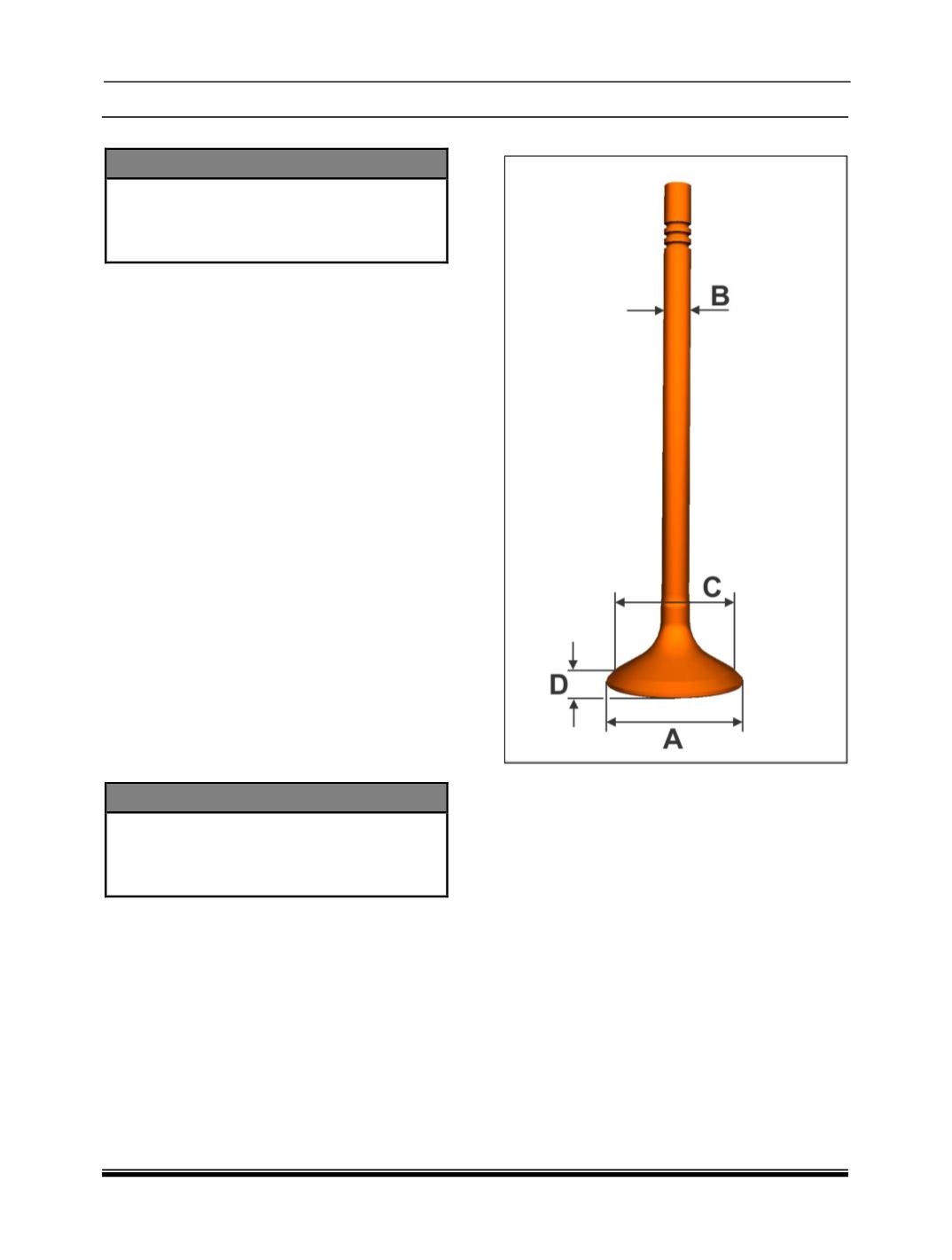

1.2L REVOTRON ENGINE
60
D. Valves :
DANGER
Petrol and Petrol fumes are extremely
explosive!! Use caution when working with
gasoline, otherwise explosion or fire may
occur, causing severe burns or death.
1. Check for leakage past the valves and valve
seats by placing the intake and exhaust
valves in the cylinder head and pouring
gasoline or isopropyl alcohol in the valve
chamber. Leakage indicates damaged valve
seats and/or valves. Note the location of each
valve so the valve can be matched to the
same location during reassembly.
2. Inspect each valve for damage. Do not
attempt to repair damaged valves. Replace
valves exhibiting the conditions in the
following list.
Burnt head or excessive carbon deposits.
Scoring or scratches on the valve surface
Excessive wear
Bend
3. Check for bent valves and excessive runout
between valve seat and stem by placing the
valve in a measuring fixture.
4. Place a dial indicator on the valve head and
valve stem and rotate the valve, observing
movement on both dial indicators.
5. The maximum permissible runout for both
exhaust and intake valve is 0.030 mm.
6. Measure the other valve dimensions listed in
table.
NOTE
Remove the valve from the grinding
machine and check valve head thickness.
The minimum valve head thickness of the
valve is 0.85 mm.
7. Rotate the valve under axial pressure several
times and remove from the cylinder head.
8. Inspect the area of contact created by the
axial rotation of the valve.
The contact pattern should be equal and
unbroken around the circumference of the
seat.
The distance from the narrow diameter of
the valve seat face to the contact line
should be 0.5 mm.










